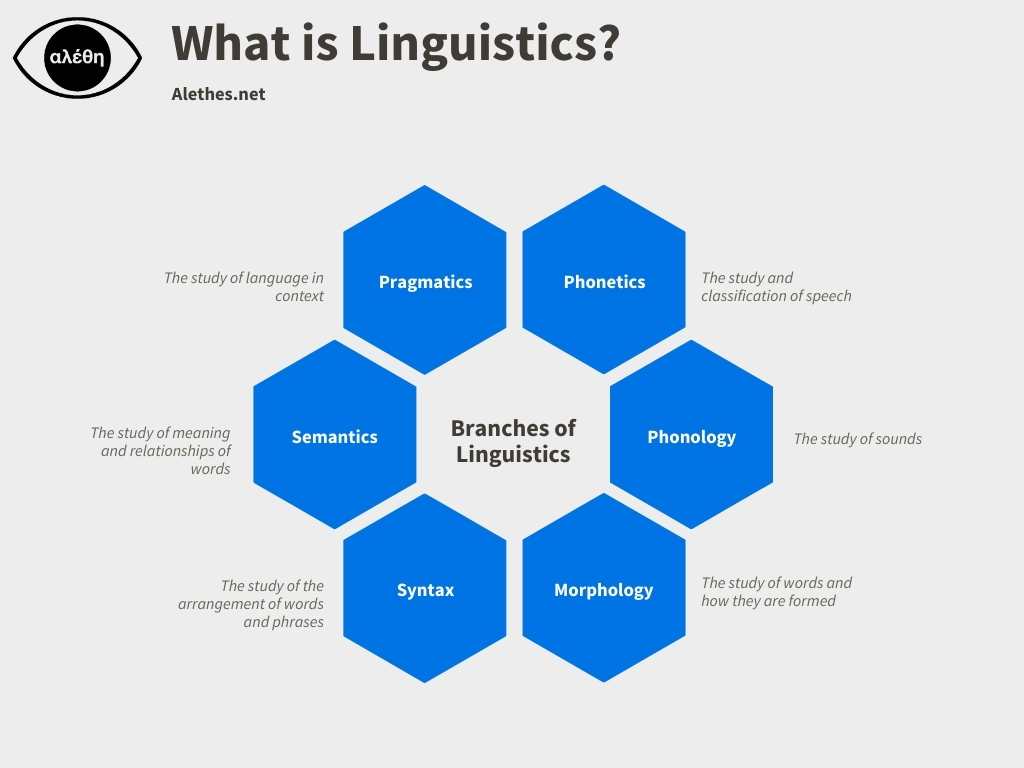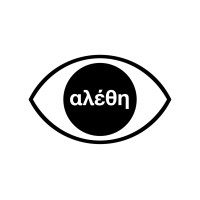In its most basic form, linguistics is the scientific study of language.
The field of linguistics is typically broken down into different sub-branches that cover everything from the origin and evolution of language to the way our brains process sound.
What’s more, these branches are constantly evolving in response to new discoveries about how humans interact, learn or what goes on inside our minds.
The importance of linguistics is often underestimated, after all, language is what we use to transmit and accumulate knowledge. Linguistics has increasingly important implications on other social studies, such as psychology, philosophy, sociology, anthropology and artificial intelligence, to name a few.
What is Linguistics and What Does it Do?
The job of a linguist typically involves answering one or several of the following questions:
Phonetics – how do humans produce and perceive acoustic or visual signals?
Phonology – how are acoustic signals organised in spoken languages or dialects?
Morphology – how are words formed?
Syntax – how are sentences formed?
Semantics – what do linguistic expressions or signals mean?
Pragmatics – how does meaning depend on context?
It is not uncommon for these subtopics to be paired together, typically as Phonetics and Phonology, Morphology and Syntax, and Semantics and Pragmatics.

Phonetics
Phonetics is the study of how sounds are produced and perceived.
This subtopic can be broken down even further, looking into three aspects – how humans produce speech, how different vocal movements affect the resulting sound and how humans convert the resulting sounds into information.
Modern phonetics have three main branches of study:
- Articulatory phonetics – the study of sounds made with the articulators
- Acoustic phonetics – the study of acoustic results of different articulations
- Auditory phonetics – the study of how listeners perceive and understand linguistic signals
Phonology
Although similar to phonetics, phonology deals with how the signals of a language or dialect are systematically organised.
For example, phonetics might investigate how a specific sound is made and how slight variations occur when we make the same sound, whereas phonology studies how this sound relates to other sounds of the same language.
Morphology
Morphology – the study of words – understands how words work as ‘units’ and how they can have different meanings on their own, and when bound with other units.
Take the example:
Free morpheme: free
Bound morpheme: – ly
Word: freely
One aspect associated with morphology are affixes; elements including prefixes, suffixes and circumfixes.
Syntax
Syntax is the study of how we put words together to form sentences.
Although there are thousands of words for us to choose from, the way that words are put together is rather particular, in order for them to make sense.
Slight changes in syntax can often mean significant changes in interpretation, which is why syntax remains of such high importance in traditional linguistics.
Semantics
Semantics is the study of the meaning of words from an “objective” perspective. Although meaning often depends on context (pragmatics), we have a sense that words map directly onto reality.
The idea that words can have definite meanings is rooted in religious tradition and our symbolic culture. This is why semantics overlaps with philosophy.
An important distinction in semantics is that between sense and reference. For example, the expressions “Charlie” and “the little rascal” might have the same referent (e.g. a child) but they have a different sense because of how they relate to other expressions.
Pragmatics
Pragmatics deals with how context contributes to the meaning of expressions.
For example, a single word may have a different connotation each time it is used as part of a phrase, sentence or paragraph. And just because one person uses and understands the meaning of one word, does not mean that others will use it and interpret it in the same way
Rather than understanding a word or phrase based on the exact meaning of the individual words, semantics takes the perspective of the speaker, the people involved and the environment that they are in.
Other Branches of Linguistics
The beginning of this article has addressed the different subtopics of linguistics.
However, looking into the actual application of linguistics in real life scenarios, there can be an additional seven subfields – or branches to be considered:
- Sociolinguistics – the study of the relationship between language and society
- Applied Linguistics – the study of identifying and applying solutions to language-related life problems
- Computational Linguistics – the study of understanding written and spoken language from a computational perspective
- Psycholinguistics – the study of mental aspects of language and speech
- Stylistics – the study and interpretation of language in regard to their tonal style
- Historical Linguistics – the study of the history of linguistics and how languages change and how they are related to each other
- Comparative Linguistics – the study of historical relationships between two or more languages and determining similarities they may possess.
If you are interested in a future career in linguistics, these are some of the branches you may want to consider investigating further.
However, below, is an expanded introduction to each:
Sociolinguistics
As a field concerned with how language is affected by society, sociolinguists investigate how example factors such as gender, ethnicity, age, or social class determine the use and interpretation of language.
This is not to be confused with the sociology of language, which looks at the effect of language on society.
Applied Linguistics
Applied linguistics deals with how language is applied to every-day life problems.
Simple examples of where applied linguistics may be studied and used within resolution, include cyber-bullying and trolling or finding alternative ways to communicate with people that can’t use speaking or listening like the majority of the population, sign language for example.
Computational Linguistics
Without realising it, you may interact with examples of computational linguistics more than you think.
This field of study investigates characterising languages in a way that computers and artificial intelligence can understand the principles and properties of language and syntax.
Think about computational linguistics next time you ask Siri or Alexa to complete your vocal command!
Psycholinguistics
Psycholinguistics looks at the mental aspects of linguistics,; the cognitive abilitiesknowledge required for us to produce and understand language.
It involves the study and investigation into the mental processes behind words and sentences and how they are deployed when communicating.
Psycholinguistics is a branch of cognitive science that works closely with other fields of linguistics, particularly when it comes to the way language is acquired by developing children.
Stylistics
Stylistics is the study of how language style is used in texts, particularly of literary works.
An example of this is how literary students are often tasked with dissecting and understanding the words, and sentence structure that Shakespeare used in many of his famed plays.
However, it is not reserved for ancient literary works.
A case of stylistic linguistics in recent years was depicted in Netflix’s documentary of the Unabomber, in which written letters by the perpetrator were connected and used as evidence for his crime.
Historical Linguistics
Historical linguistics studies the history of languages; how they have changed over time and how they are related to one another.
It looks further into how and why languages change over time; often reconstructing them back to the past form of a language.
Historical linguistics is also very similar to the field of comparative linguistics.
Comparative Linguistics
Often related to historical linguistics just mentioned, this is about investigating where words have been ‘borrowed’ between languages, but where words can be related to a single, often ancient, language and how their uses and meanings have evolved.
It refers back to ‘comparing’ different languages and how they have evolved from a single parent language.
Challenging Traditional Linguistic Concepts
Of course, everything about linguistics revolves around the concept of language. We can legitimately study “language” as we know it, because we have an intuitive grasp of it as animals that can use it.
However, it turns out scientists don’t have a clear definition of language especially as compared to the communication systems of other animals. There is still a debate about what language is and how it evolved, and this lack of consistency with biology does not help the scientific status of linguistics.
At Alethes.net we have proposed a solution to this conundrum. It uses the concept of animal signals.
Basically, language is a way of producing signals that is in many ways similar to what birds do when they sing, or what chimpanzees do when they gesture.
However, language differs most fundamentally in the way human beings try to make the receivers of those signals respond. Because no other animal does this, it is important to review our understanding of linguistics in view of these facts.
Conclusion
Linguistics can best be described as the scientific study of language.
However, language is a complex subject, it is not only about how we read, write or speak, but also about how our actions and environment can impact our language, just as much as our skills or education.
In this article, we hope to have introduced you to some of the traditional concepts of linguistics, and how there are distinct differences as well as obvious overlaps between the different fields.
At Alethes.net, we introduce a new approach to the study of language. We focus on concepts that are demonstrably more fundamental than those traditional ones, such as the concepts of animal signal and the linguistic universal of human kinship.
If you want to read what we have to say then please check out our article ‘Why science needs to understand language’. Or visit our journal to read our original research papers.
If you wish to get involved with us further, or even help contribute to our project, then please get in touch with Jose and the team via our contact page.
